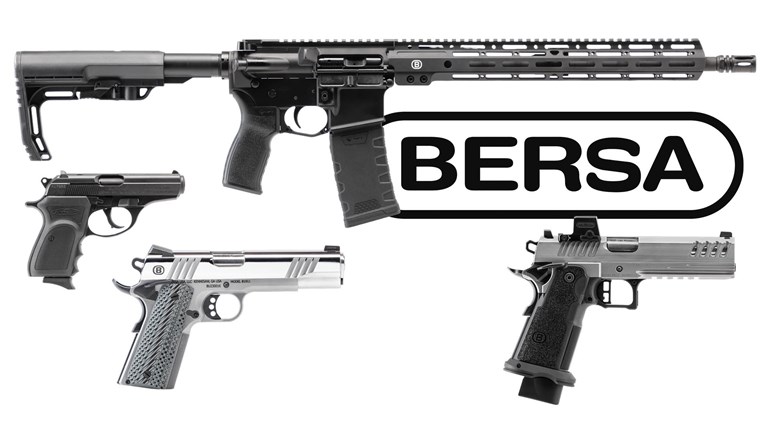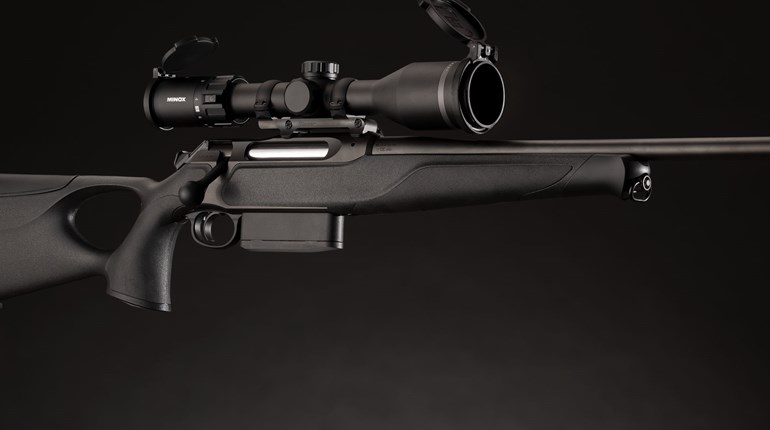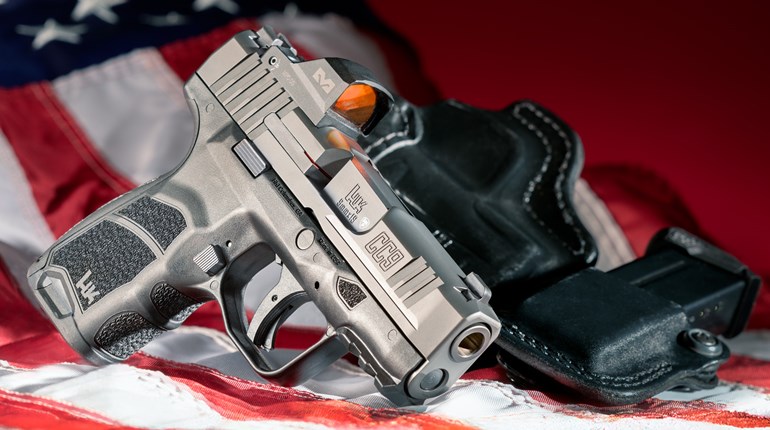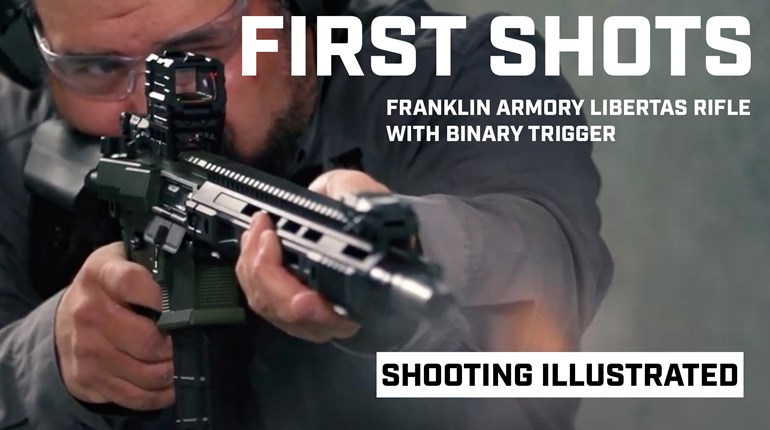
My first time shooting the IWI Tavor X95 came on a momentous day in an oddly appropriate location. It was the day after I visited the IWI factory in Ramat HaSharon, Israel, a suburb of Tel Aviv. We left our beachfront hotel near the Tel Aviv marina early that morning and drove north, toward the range where IWI had prepared for us to shoot every gun the company makes. On the way, we planned to stop at a site of historic significance: Tel Megiddo.
This “mountain” (really the result of settlements built atop each other), was inhabited between 9,000 and 2,500 years ago. As we walked through the archaeological excavations up to the peak, we could see out over the Jezreel Valley toward, appropriately, Mount Tabor (Har Tavor in Hebrew). At the summit, one of our hosts checked his phone. “Look at that,” he said. “Obama just agreed to the nuke deal with Iran.” After some nervous laughter, we all got quiet, realizing the impact of the news we heard and the place where we heard it. You see, Megiddo is better known in the West as Armageddon.
With such pleasant thoughts foremost in our minds, we proceeded to a nearby kibbutz, which had a shooting range on its property. There, I had my first real encounter with the Tavor X95, and where I determined the X95 is The Answer.

The Question
The Answer to what question(s), you ask? The questions that have plagued security services the world over: How can we combine the range and power of a rifle round in a platform small enough to easily maneuver in and out of vehicles, maintain a low profile in urban areas, fit both males and females for multiple missions, be reliable and remain within sensible budgets? In the X95, all of those requirements are met with aplomb. But how did it come to be?
Origin of The Answer
In 2001, the Israel Defense Forces (IDF) began testing a new, long-stroke-piston-operated bullpup rifle with certain combat units. This rifle, the TAR-21 (Tavor Assault Rifle, 21st Century) eventually began to replace the M16/M4 in mainline service by 2009. Almost immediately, however, operational considerations led to the need for further refinement. “After the IDF chose the Tavor as its main rifle, a few special forces units in the IDF requested a shorter 5.56 NATO platform with the option to convert it into a 9 mm submachine gun,” said IWI Marketing Product Manager Gilad (last name withheld for security reasons). “And that is how the platform got the name X95—‘9’ for 9 mm and ‘5’ for 5.56 NATO (of course, today the X95 can be also converted to .300 BLK). Eventually, the IDF decided to adopt the X95 as its new main rifle together with the Tavor that is already in service. The reason is that the X95 gave an answer to all tactical scenarios and demands in the IDF (starting from the special forces units). It is known in Israel as either the X95 or the Micro Tavor.”
In 2013, IWI introduced the Tavor SAR, a semi-automatic-only variant of the TAR-21, in the American market through its Harrisburg, PA-based subsidiary, IWI US. The rifle was an enormous success, with 50,000 units sold in about two-and-a-half years—the best sales performance for a commercially available bullpup rifle in history. Like the IDF, though, American consumers had some modifications they wanted to see on the platform. The biggest complaints, according to Internet forums, social media and word-of-mouth, were the location of the magazine release (a lever on the bottom of the gun in front of the shooter’s armpit), the rather heavy trigger-pull weight and the lack of a true trigger guard. Interestingly, those concerns were largely the same as some of the major modifications requested by IDF units, and all are addressed by the X95.

How it’s Answered
The X95 might look like merely a smaller version of the original Tavor, but there’s more to this bullpup than meets the eye. In addition to making the platform more compact, IWI listened to soldier input and further modified the gun. Immediately noticeable is the location of the X95’s charging handle. By putting this rather important part closer to the shooter, operating the rifle is made simpler in close quarters and stoppages can be cleared much faster and more comfortably.
Another big change from the original Tavor is the location of the magazine-release button. While the Tavor had an ambidextrous (because it was a single lever in the middle of the gun, rather than on the side) mag release, its location required a significant change in the manual-of-arms from shooters more familiar with the AR-15 or even AK-47 platforms. Included among such shooters were the bulk of the American commercial market and the IDF, which has fielded both the M4 carbine and the AK-47-based Galil platform. In response, IWI changed the magazine release functionality. Instead of a single lever, the X95 has a button on either side (to keep the ambidexterity) of the chassis above and in front of the trigger—a position very similar to that found on the AR-15. Dropping a mag is now as simple as on the AR, though loading a new magazine still requires a bit of a change since the magazine well on the bullpup platform is well behind the trigger instead of directly below the release button.

When it comes to the trigger, the Tavor SAR inspired numerous aftermarket fixes, including the excellent Geissele Super Sabra trigger pack I installed on the Tavor in my safe. Of course, the reason so many aftermarket options exist is because the original Tavor’s trigger-pull weight was right around 10 pounds (which was actually not bad for a bullpup, but on the bad side of awful for a commercial rifle). For the commercial variant of the X95, IWI included a much improved trigger that broke smoothly at 7 pounds, 6 ounces. For those who are still not satisfied, the Gen 2 Super Sabra from Geissele will work in the X95, and other manufacturers will likely follow suit given the platform’s popularity.

To address the trigger-guard (or lack thereof) concern, IWI took a novel approach. Rather than scrap the Tavor’s arm support, which was used in IDF training and, with proper practice, can help the shooter achieve a more stable stance, the company made the pistol grip/arm-support assembly removable on the X95. A single Phillips-head screw holds it tightly in place, so removal is simple with a common screwdriver. Once this long screw is out, pulling down separates the assembly from the X95. An aftermarket pistol grip assembly with a traditional trigger guard is available for $29.99 from IWI US and installs easily. The entire grip-swap procedure might take 5 minutes if you work very slowly. I found the new grip slightly more comfortable than the legacy Tavor version that ships on the gun, and having a true trigger guard does provide a degree of peace of mind.
Other changes between the original Tavor and the X95 include a straighter chassis that further reduces bulk, a redesigned fore-end with rails at the 3-, 6- and 9-o’clock positions covered by
easily removable rail covers and a lower-profile bolt-release button located behind the magazine on the underside of the rifle. All of these changes are, in my view, improvements upon an already excellent platform and demonstrate the unique relationship between IWI and the IDF—when an IDF unit asks for a change, the response is to figure out a way to make it work rather than tell the soldiers in the field what they’re doing wrong with what the manufacturer considers perfect.

The Real Answer
All of those improvements are great, but why is the X95 The Answer? We’ll start with its chambering—5.56 NATO. (IWI US plans to offer a 9 mm conversion kit for the X95 for anyone who prefers a pistol-caliber carbine.) Putting a rifle round in a small, yet controllable, package has been the Holy Grail of a host of security services around the world. This concept has become universal and has all but killed the submachine gun as a go-to firearm for many special operations units. A good example is the U.S. Secret Service replacing the Uzi with the FN P90 in the early 1990s and, in fact, the IDF itself has phased out the venerable Uzi and replaced it with the X95. The power and terminal performance of a rifle round is simply more devastating than that of a handgun round, and rifle cartridges offer vastly extended engagement ranges.
But the Tavor is also chambered in 5.56 NATO, so why is the X95 better, you ask? Well, that brings us to a small change made on the factory X95 sold in the U.S.—the buttpad. It is noteworthy for its large size in relation to the rifle upon which it mounts, and that is very much intentional. Without such a thick buttpad, the X95 would not meet the NFA-mandated overall length for a non-short-barreled rifle (SBR) of 26 inches. Were the X95 to have the standard IDF buttplate, it would have to be classified as an SBR and would require the $200 tax stamp, fingerprinting and all of the other hoops through which one must jump to own an NFA-regulated item, despite its 16.5-inch barrel.

As sold commercially, the X95 is the same overall length as the Tavor SAR, but IWI US is planning to offer a factory SBR version and, one hopes, conversion kits for existing X95s. As an SBR, the X95 may be the perfect defensive rifle. The 13-inch barrel on the SBR version sacrifices little in terms of performance, and, combined with the significantly shorter buttplate, provides an overall length of just 22.8 inches. That means the X95 SBR can still engage targets accurately out to 400 or so meters, yet fit in a backpack. It makes negotiating corners in your home a cinch and arguably makes it more difficult for a criminal to grab from the muzzle than a handgun.

The Answer at the Range
I had the chance to shoot the IDF-issue version of the X95 in Israel, and my initial reaction was, to put it mildly, immense excitement. Even in full-automatic mode, it was easy to control, despite its diminutive size. When I took the civilian model available in the U.S. to the range, I was looking to see if complaints I’ve seen online about shot stringing leading to mediocre accuracy were true. At 100 yards, accuracy was indeed mediocre, with the gun shooting just shy of 2-MOA groups. At 25 and 50 yards, however, it delivered much smaller groups—in the sub-MOA size. I’m not sure why the groups spread out so much at 100 yards, but even a 2-MOA group at that range is good enough for self-defense purposes.
For anyone looking for an ergonomically superior version of the Tavor, the X95 is most definitely The Answer. While it won’t win any bench-rest competitions, it is more than accurate enough for home protection, and in that role, it may be The Answer we’ve all been looking for.



Made in Israel
I had the good fortune to visit the Israel Weapon Industries factory in Ramat HaSharon, Israel, and I was amazed by its modernity and the company’s emphasis on quality control. From rows of ultra-modern CNC machines to lines of barrel-making machinery, IWI’s factory is on par with any major U.S. arms maker. At every station, quality control is paramount, as evidenced by rigorous testing of every component at each stage of manufacture. Advanced machinery measures tolerances to miniscule levels, and anything not in spec gets fixed or tossed before final assembly. What I knew, but did not appreciate until I was there, was that IWI exports its products to militaries and security forces all over the world—often in significant quantities (India’s reserve police force, for example, ordered 12,000 X95s). When I saw racks of Galil ACE rifles destined for customers in South America or Negev light machine guns headed to Azerbaijan, I was surprised by the extent of global demand for IWI’s products. That demand is clearly a result of the company’s attention to quality, and such quality is obvious in the products sold by IWI US in America.
Ed Friedman




































